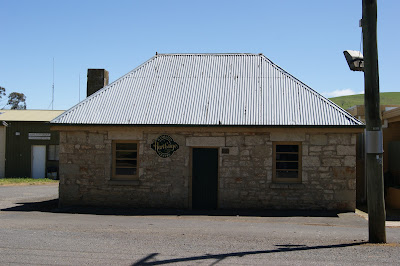The entry arch was adjacent to the warder’s cottage. The gaol burned down in the early 1900s, leaving only the stone wall, which was eventually knocked down around the middle of last century when the property was acquired by the Central Highlands Council to be used as their council works depot. The demolished sandstone was simply bulldozed into the nearby Clyde River.
The only remaining traces of the old gaol were the warder’s cottage and the small attached section of wall incorporating the archway. About 1990, the council was preparing to knock down the archway when it was rescued by a local family with a historical connection to the site. John Madden was the police superintendent at Hamilton in the 1860s, with a reputation of being an “active and fearless officer” before he was tragically killed by an overturning horse cart in 1869.
His descendants still live in Hamilton and it was his great-great-grandson Mike and wife Judy who came to the arch’s rescue. Judy had already spent a great deal of time restoring historic cottages in Hamilton to save them from ruin, and when she and her husband heard about the archway’s intended fate, they chose to give it a new life as a tribute to Madden, whose residence was once part of the gaol complex. With the help of a stonemason they had the archway carefully removed from the original gaol site and reassembled brick-by-brick at the park on the main road.
Main Text & Information Source plus Arch photo & Historic photo –








